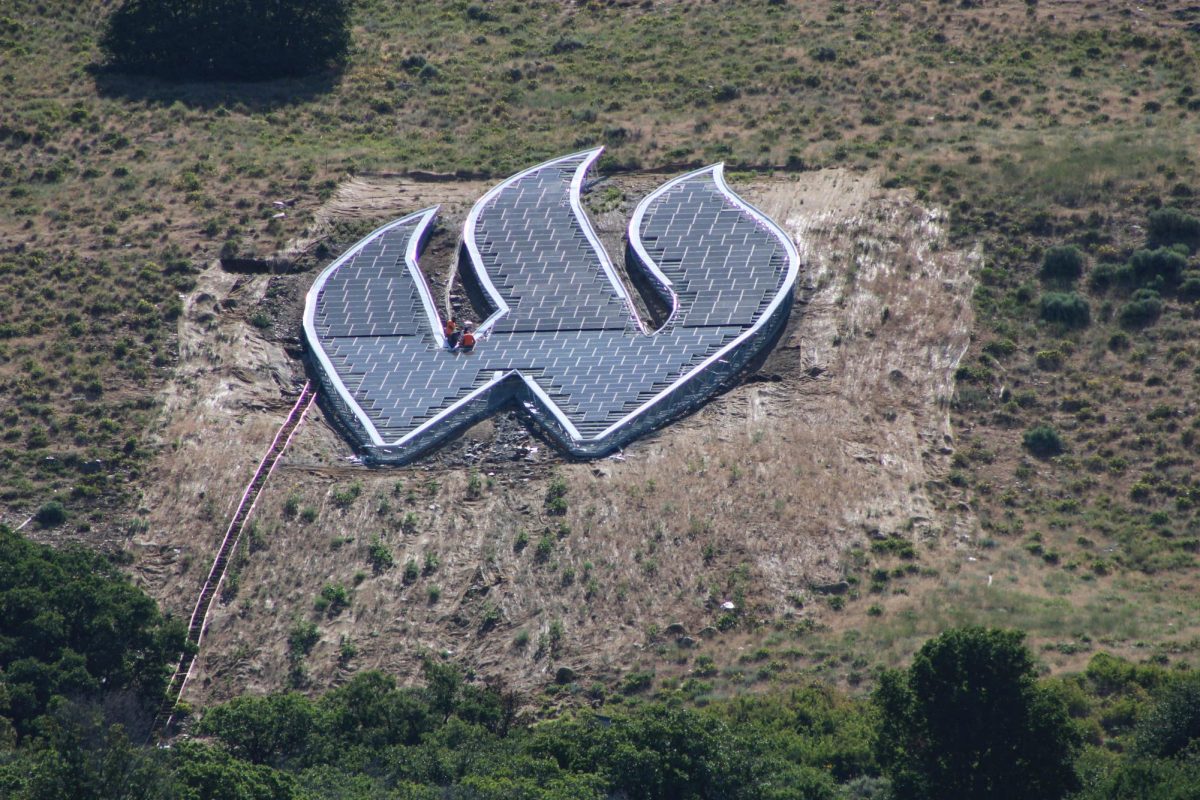Weber State University’s enrollment for the 2021-2022 school year was less than expected, which has left the school with the task of making decisions about budget adjustments.

Weber State is a public university, meaning the school has two primary funding sources: taxes and tuition.
Norm Tarbox, vice president of Administrative Services, stated that the ratio between these two important revenues is about 55% tax, 45% tuition.
“If either resource goes down, budget adjustments will need to be made,” Tarbox said.
The exact reason behind WSU’s current lower enrollment rate is unknown, but Tarbox said there appears to be multiple factors. One such factor is the economy.
Clayton Anderson, director of Budget and Institutional Research, explained that the university has a pattern “countercyclical” to the economy.
“We’re the opposite — if the economy goes up, that’s usually when our enrollments go down,” Anderson said. “When the economy goes down, we go back up.”
This is not unique to Weber State. The New York Times reported in January 2020 that “as the supply of jobs shrinks, college enrollments expand.”
Job scarcity and low wages reduce the “opportunity cost” of college, because during an economic boom, students may have to give up working for strong wages in order to attend college, the Times explained.
The economy across the nation has been affected by the pandemic. In many places, college enrollment went down, but WSU experienced an increase in enrollment during the summer of 2020.
According to Anderson, “last summer semester was higher than it’s ever been in the history of the university.”
Prior to the pandemic, Weber State was already offering a number of online classes.
“We’ve always had a strong online presence at Weber State,” Anderson said.
Anderson also emphasized the fact that online classes constitute 18-22% of all credit activity and have continued to stay strong during COVID.
“[We’re] coming back to where we have more and more face-to-face, but we’re not yet to the place where we were pre-pandemic,” Anderson said. “We still have some room to grow.”
Utah’s economy has made positive strides since last winter.

Deseret News reported in August 2021 that “Utah ranks #1 for GDP growth — despite the pandemic.” But the state has once again entered the point of the cycle where the economy goes up and enrollment goes down. Although there are benefits to a booming economy, one of the side effects is a decrease in college enrollment, which leads to a decrease in funding for WSU.
“We have to do some projections to anticipate what we think enrollment is going to be so that we can assign the budget ahead of time,” Anderson said. “We establish the budget for the institution and it starts on July 1 of every year.”
Because initial budget decisions are made long before the fall semesters begin, the school has to estimate how many students will be attending so they can predict the revenue that will come from tuition.
“State revenues look good. Enrollment does not look good. It’s 4.1% down this fall,” said Tarbox.
Circumstances this semester have been significantly different than what was estimated when the budget was created. Four percent may not seem significant, but Tarbox puts it into perspective.
“If this shortfall continues the rest of the year, as much as $3 million will need to be cut from the budget,” he said.
Like a corporation or business that needs to reduce spending, the university may look to see where unnecessary expenses may be eliminated. Anderson said the biggest expense is employment, which is well over 80% of the budget.
“It’s hard to find places to cut without impacting faculty positions,” Anderson said.
WSU is hoping to avoid layoffs while still finding ways to decrease costs. One program that has been implemented for this purpose is the Voluntary Separation Program.
“Basically, if people had worked two years or more and were on contract with the university, we incentivized them to leave the institution by giving them 20-30% of what their salary was,” Anderson said.
This incentivizes faculty members to leave voluntarily.

VSIP provides multiple benefits and opportunities for budget cuts. If a faculty member is approved for the program, the position they leave is evaluated. If the position is deemed not necessary to refill, that’s a cut that can be made.
If it is necessary to refill the position, it will be reviewed for the possibility of changing the position to a junior role with less experience required and a lower salary.
“It is better than resorting to layoffs,” Tarbox said.
Thus far the program has been successful. Because so much of the budget goes towards faculty, adjusting the university’s employment is the “only way” to be able to make significant spending cuts, according to Tarbox.
There are also many other efforts on campus to figure out how to move forward to increasing enrollment.
“We have to be smarter, more nimble, find markets and serve needs. Hundreds of people are involved right now trying to address this issue,” Tarbox said.
Weber State does have open enrollment and may have new students in the spring. However, retaining students is equally as important as acquiring students. Tarbox said one of the best things WSU can do is to keep the students who are already enrolled.
“Helping a student make the choice to stay involves all sorts of things,” Tarbox said.
There are many people who play a part in retention efforts throughout campus. Some resources include the Student Wellness Center, academic advising, peer mentoring, the Starfish program, counseling services, clubs and groups and a multitude of others.
The question of budget cuts will take a few months to answer as the VSIP program plays out and spring semester enrollment still remains unknown.
“It will be March before we set firm numbers,” Tarbox said.



















